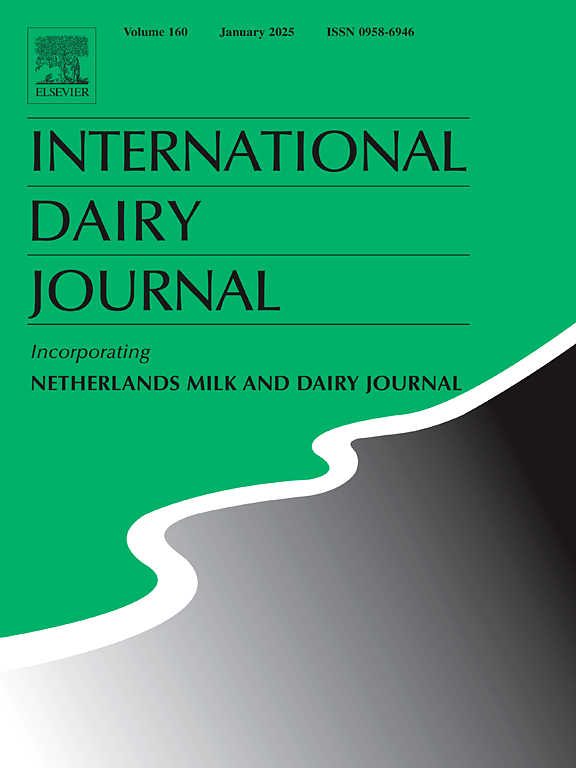膜过滤与离心分离制奶油与脱脂奶的成分结构比较
IF 3.1
3区 农林科学
Q2 FOOD SCIENCE & TECHNOLOGY
引用次数: 0
摘要
本研究比较了1.4 μm陶瓷碳化硅(SiC)离心分离和膜过滤在25°C和50°C条件下对乳脂的分离效果,重点研究了乳脂和奶油的组成、粒径分布、zeta电位以及乳脂球(mfg)的结构完整性。离心分离实现了脂肪回收率(在25°C时为87%,在50°C时为91%),产生的奶油脂肪含量最高(36.6%),但脂肪滴尺寸分布更广,并且由于剪切诱导的聚结而导致结构破坏。膜过滤在25°C和50°C下的脂肪回收率分别为89%和85%,但在颗粒尺寸为1-10 μm的乳膏/滞留物中保留了较大且完整的mgf。然而,在25°C条件下,膜过滤和污垢挑战需要更长的处理时间。这些发现表明,离心分离是大批量制造过程的理想选择,而膜过滤在精度和结构保存方面表现出色,使其适合需要轻度MFGM保留的应用。本文章由计算机程序翻译,如有差异,请以英文原文为准。
Comparing composition and structure of cream and skimmed milk produced by membrane filtration and centrifugal separation
This study compares milk fat separation at 25 °C and 50 °C by centrifugal separation with membrane filtration using 1.4 μm ceramic silicon carbide (SiC), focusing on composition, particle size distribution, and zeta potential of milk and cream, as well as structural integrity of the milk fat globules (MFGs). Centrifugal separation achieved fat recovery (87 % at 25 °C and 91 % at 50 °C), producing cream with the highest fat content (36.6 %) but broader fat droplet size distribution and structural disruption due to shear-induced coalescence. Membrane filtration achieve a fat recovery of 89 % at 25 °C and 85 % at 50 °C but retained larger and intact MFGs in the cream/retentate with narrower particle sizes 1–10 μm. Although, longer processing times are required for membrane filtration and fouling challenges were observed at 25 °C. These findings show that centrifugal separation is ideal for high volume manufacturing processes, while membrane filtration excels in precision and structural preservation, making it suitable for applications requiring gentle MFGM retention.
求助全文
通过发布文献求助,成功后即可免费获取论文全文。
去求助
来源期刊

International Dairy Journal
工程技术-食品科技
CiteScore
6.50
自引率
9.70%
发文量
200
审稿时长
49 days
期刊介绍:
The International Dairy Journal publishes significant advancements in dairy science and technology in the form of research articles and critical reviews that are of relevance to the broader international dairy community. Within this scope, research on the science and technology of milk and dairy products and the nutritional and health aspects of dairy foods are included; the journal pays particular attention to applied research and its interface with the dairy industry.
The journal''s coverage includes the following, where directly applicable to dairy science and technology:
• Chemistry and physico-chemical properties of milk constituents
• Microbiology, food safety, enzymology, biotechnology
• Processing and engineering
• Emulsion science, food structure, and texture
• Raw material quality and effect on relevant products
• Flavour and off-flavour development
• Technological functionality and applications of dairy ingredients
• Sensory and consumer sciences
• Nutrition and substantiation of human health implications of milk components or dairy products
International Dairy Journal does not publish papers related to milk production, animal health and other aspects of on-farm milk production unless there is a clear relationship to dairy technology, human health or final product quality.
 求助内容:
求助内容: 应助结果提醒方式:
应助结果提醒方式:


